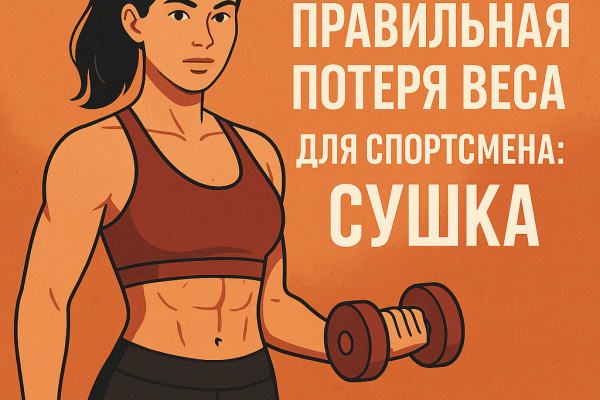Proper weight loss for athletes: cutting

Many athletes strive to lose weight, and the reasons for this are different. In some sports, lighter weight can be an advantage, as it increases the ratio of strength to body weight. However, such an effect can only be achieved if the process is properly organized, otherwise the risk of harming your own form and health is very high.
Weight loss is always associated with calorie control. If you consume more than you spend, you gain weight, if consumption and expenditure are the same - the weight is stable. In order to lose weight, you need to create a calorie deficit. A realistic rate of loss of about 1–2 kg per week is considered, which corresponds to a daily deficit of about 500–700 kcal. It is best to dry in the off-season, because during an active sports season, combining intensive training with reduced nutrition can lead to serious performance problems.
It is important to understand that the loss of adipose tissue is inevitably accompanied by some loss of muscle, but this process can be minimized. To do this, you need to combine training at 60–70% of your maximum heart rate for at least an hour a day with a variety of exercises for all muscle groups. This will help maintain muscle tone and strength.
There are several practical strategies that can make drying effective and safe:
· Do not skip meals. If the body experiences a sharp calorie deficit, it slows down the metabolism. It is better to distribute meals evenly throughout the day.
· Give up fatty dairy products, preferring skim or low-fat options.
· Avoid liquid calories. Carbonated drinks and juices contain a lot of sugar, even if the juices have vitamins, their calorie content is also high.
· Include foods that quickly saturate in your diet. Soups, salads, stewed vegetables are good at reducing hunger and helping to avoid overeating.
· Don't reduce your protein intake. To maintain muscle, you need 2–3 g of protein per kilogram of body weight per day.
· Eat more slowly and stop when you feel full. This allows the body to signal satiety in time and prevents overeating.
· Avoid mindless snacking. Eat only when you are really hungry, and if you need to snack, choose low-calorie foods like apples or carrots.
Thus, proper drying is a complex process that combines calorie control, competent training planning and balanced nutrition. The main thing is to do everything gradually and not set unrealistic goals, then the result will be not only noticeable, but also safe.
